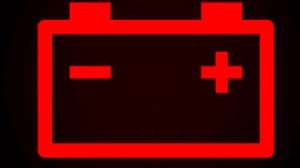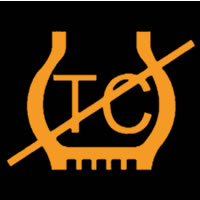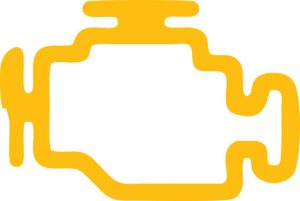As the saying goes, “forewarned is forearmed,” and that’s especially true in regards to your Ford Escape’s dashboard warning lights. You’re cruising down the highway, feeling like you’re in control, in the realm of your dashboard. A mysterious light flickers to life on your dashboard.
Your heart skips a beat as you wonder what it means and what’s going on under the hood. Is it a minor glitch or a major problem? One thing’s for sure – ignoring it isn’t an option. You need to know what these lights are trying to tell you, and what you can do to get your Escape back on track.
Quick Navigation
Safety Features Malfunctions
Airbag Warning Light
When the airbag warning light fails to illuminate or remains on, it signals an issue with your Ford Escape’s safety features.
Common Causes of Malfunctions
Sensor Faults: Accelerometers, impact sensors, side door pressure sensors, or seat occupancy sensors may be faulty.
Dislodged Cables: Connections related to the SRS under the front seats can trigger faults.
System Behavior
The Airbag Control Unit disables the system to prevent accidental deployment, rendering it inoperative during collisions. Ensure sensors are clean and uncovered for optimal functionality.
Performance and Powertrain Issues
Wrench Warning Light
Indicates a faulty throttle control body or a powertrain issue.
OD Warning Light
Signals a transmission fault when flashing, ranging from oil or sensor issues to potential transmission failure.
Diagnostic and Maintenance
Use diagnostic tools to read fault codes and identify errors.
Address signs like hesitation, stalling, or sluggish driving caused by electrical faults or faulty sensors.
Importance of Prompt Action
Resolving powertrain issues promptly prevents further damage and ensures safety while driving.
Electrical and Battery Faults
Battery Warning Light
Indicates a charging fault related to the alternator, battery, connections, or wiring.
Troubleshooting Steps
Inspect the drive belts if possible.
Turn off non-essential electrical utilities to conserve power.
Common Issues
Battery and Alternator Problems: May result in electrical faults, including short circuits or loose connections.
Maintenance Tips: Proper battery maintenance and monitoring alternator performance help prevent these faults.
Information and Message Alerts
“i” Warning Light
The “i” light signals an informational or warning message on your dashboard.
Message Details
Messages range from general information to warnings and may illuminate in red or amber.
These alerts may indicate malfunctions or the need for service.
Diagnostic and Maintenance
Use diagnostic tools to read fault codes and identify the issue.
Regularly check messages to ensure timely maintenance and address potential problems.
Airbag System Warnings
Airbag Warning Light
The airbag warning light alerts you to a critical safety issue in the airbag system.
Common Causes
Faulty Sensors: Includes accelerometers, impact sensors, or seat occupancy sensors.
System Disabling: Fault detection disables the airbag system to prevent accidental deployment.
Safety Implications
A disabled system will not operate during a collision, increasing risk. Address issues promptly by consulting the owner’s manual or visiting a mechanic.
Adaptive Cruise Control Errors
Adaptive Cruise Control Warning
Causes of Malfunction
Sensor Obstruction: Dirt, snow, or stickers blocking sensors.
Other Factors: High brake temperature or poor visibility affecting performance.
Troubleshooting Steps
Ensure sensors are clean and unobstructed.
Check for environmental factors like visibility or brake temperature.
Further Diagnosis
If issues persist, refer to the owner’s manual or consult a mechanic for resolution.
Stability and Traction Control
Traction Control Warning Light
System Functionality
Helps maintain vehicle stability by reducing oversteer and understeer.
Automatically applies brakes or adjusts engine power to individual wheels when traction is lost.
Warning Light and Troubleshooting
Traction Control Warning Light: Illuminates or flashes when a fault is detected.
Immediate Action: Pull over and switch off the engine to prevent further damage.
Potential Causes: Faulty sensors, wiring issues, or software glitches.
Resolution
Reset the system, replace faulty components, or update the software as needed.
Addressing the warning light promptly ensures vehicle stability and safety.
Engine and Transmission Problems
Check Engine Light
Warning Signs and Causes
Wrench Warning Light: May indicate a faulty throttle control body, oil leaks, or low oil pressure.
OD Warning Light Flashing: Signals transmission faults ranging from oil issues to sensor failures or complete transmission failure.
Diagnosis and Maintenance
Use diagnostic tools to read fault codes and pinpoint errors.
Replace faulty parts or address oil-related issues to avoid severe engine damage.
Importance of Prompt Action
Ignoring these warnings can result in severe engine or transmission failure, compromising vehicle functionality and safety. Address issues immediately.
Battery and Charging System
Battery Warning Light
System Functionality
The battery and charging system powers key electrical components, including the engine, lights, and accessories.
Warning Light and Common Issues
Red Battery Warning Light: Signals a charging fault, often related to the alternator, ageing battery, or wiring.
Immediate Action: Switch off non-essential utilities to conserve power.
Maintenance Tips
Regularly check the battery’s condition and clean terminals.
Ensure proper connections to prevent faults.
Importance of Regular Checks
Routine maintenance helps avoid charging faults and ensures the system operates correctly.
Diagnostic and Repair Tips
Diagnosing Issues
Use a scan tool to read fault codes and identify problems.
Refer to the owner’s manual for details on warning lights and their meanings.
Professional Assistance
For complex issues, consult a mechanic or auto repair workshop.
Prompt repairs prevent further damage and ensure vehicle safety.
When looking at Ford, make sure to check out our guides on models like the Ford Figo, Ford Galaxy, Ford Falcon, and Ford F150. Understanding dashboard warning lights is essential. Our expert reviews break down what each light means, highlighting common alerts for these models and what they could signal about underlying issues, so you’re never left guessing behind the wheel.







